Advertisement
Mass. Furniture Fanatics Come Out Of The Woodwork For Year-Long Celebration
An unprecedented collaboration between 10 Massachusetts museums and institutions is underway, and it celebrates something we all use every day.
“Simply to eat you have to do it on a table. You sit in a chair. You write at a desk,” Brock Jobe explained. He's one of the architects behind a year-long series of exhibitions, lectures and demonstrations called “Four Centuries of Massachusetts Furniture.” You could call it a year-long furniture making love-fest.
Jobe, a professor of American decorative arts at the Winterthur Museum in Delaware, unabashedly admits that he's "hooked on furniture.” The program shows he's not alone, but he says the craft’s legacy in Massachusetts has been neglected for too long.
"Very few people realize that more than 150 million pieces of furniture have been made here in this state over 400 years," Jobe said, adding that more 17th century furniture from Massachusetts survives than from all the other original 13 colonies combined.
"In Gardner — which became the chair capital of America — in the 1890s, one factory was producing over four million chairs a year," Jobe explained. "This is a story that’s really been lost and we’re trying to bring attention to it again.”
Massachusetts Historical Society president Dennis Fiori agrees it’s about time.
"Frankly, there are innumerable cabinet makers and carvers all throughout Massachusetts that haven’t been recognized and a lot of research needs to be brought together,” he said. Pieces from the society’s collection are in a new exhibition called “The Cabinetmaker and the Carver.”
"And my favorite piece is a one that we own. It’s a bookcase-cabinet, probably designed by H.H. Richardson, who you know did Trinity Church here in Boston," Fiori said. "And it’s just a phenomenal piece of arts and crafts carving from the late 19th century, just a tour de force."
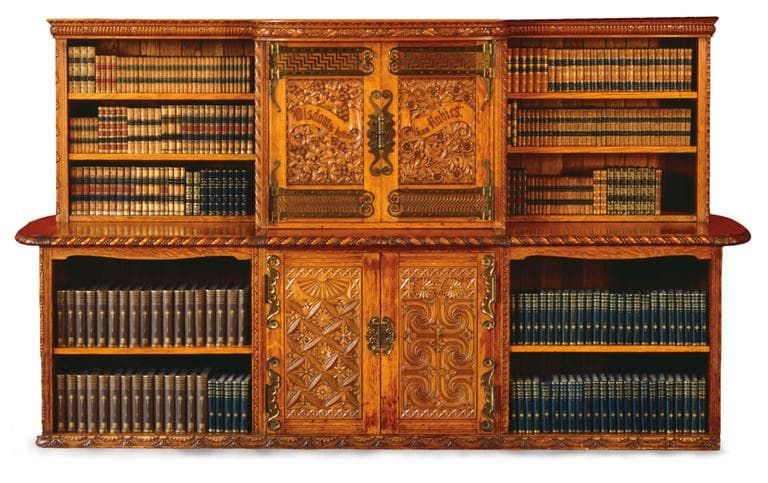
Fiori is excited about the series, but he is also concerned because he said a lot of older collectors are selling or donating their antiques, and young people aren’t as interested in carrying the torch.
Meticulous Craftsmanship
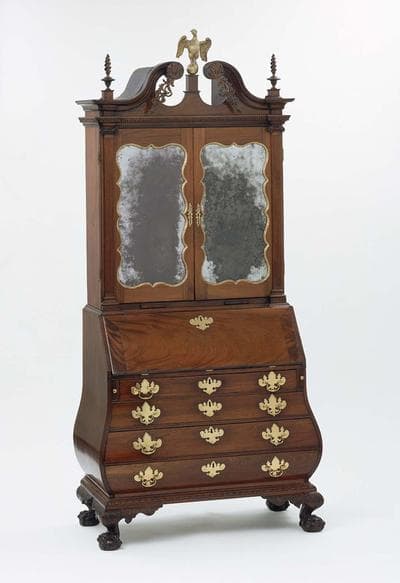
“We’re here standing in front of George Bright’s desk and bookcase, which is really one of our finest pieces of Boston furniture in the collection,” explained Elliot Bostwick Davis, chair of the MFA's Art of the Americas wing. “It has this swelling form called bombay. It's a French word for swelling curves — you think of bombastic as a word we sometimes use in English. And it has these flaming finials that look like corkscrews at the top."
Davis said Revolution-era Boston furniture makers were known for their meticulous craftsmanship. To honor that, the MFA is hosting academic meetings, gallery talks and a demo with Peter Follansbee, the museum’s “master joiner.”
A Continued Legacy
A workshop full of students wielded chisels, hammers and planes to learn 17th and 18th century techniques at the North Bennet Street School in Boston’s North End*. School president Miguel Gomez-Ibanez took me on a tour of the 135-year-old institution's new 65,000-square-foot building and said contributing to the year-long celebration is a natural.
“Although we train our students in these antique furniture forms, the idea isn’t that everybody is going to go out and make Chippendale chairs,” Gomez-Ibanez explained. “I understand there’s a limited market for Chippendale chairs, but if you can make a Chippendale chair you can certainly make a modern chair.”
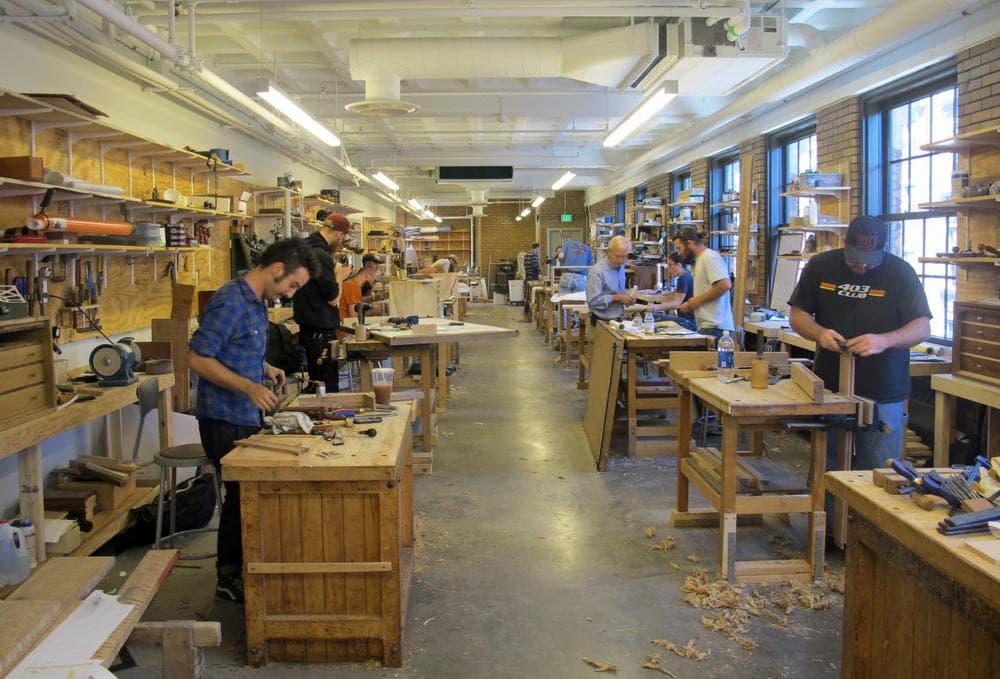
Student Annette Sophie Lippert slid a large plane over a gorgeous circle to make a complicated table by hand.
“The legs are sitting over there,” she explained. “This is the table top, if you look on the underside you see it’s kind of got a conical shape.”
Which makes it tricky to execute. Using traditional hand tools is painstaking, Lippert admitted, but the bigger challenge is educating the public about why contemporary handcrafted furniture costs so much more than mass produced.
"An image on a webpage doesn’t do it," she said. "Like on my webpage, I try to do slideshows so they see the process.”
Fellow student Jonny Stong, of Philadelphia, said the North Bennet Street School is one of the best in the country to learn traditional furniture making. He called it a “hidden gem" and hopes people will come to the demonstrations as part of the year-long program.
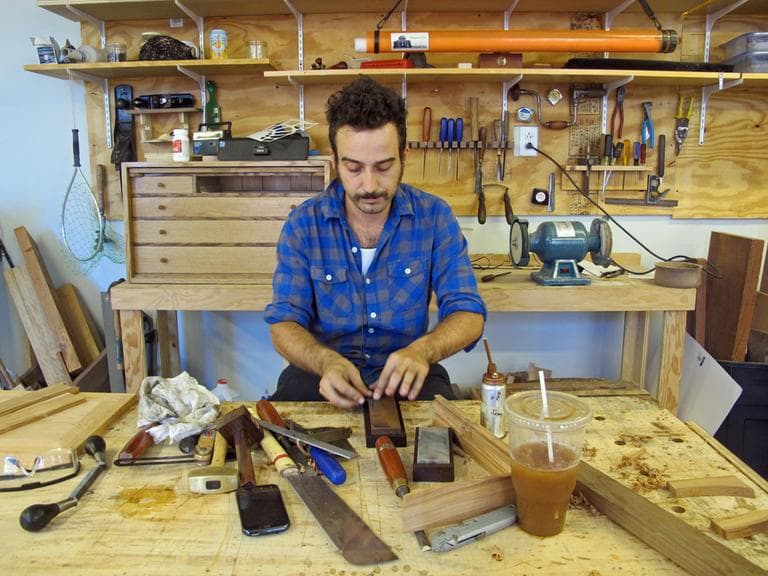
“People don’t know that they can custom design furniture for their houses if they want to,” he said. “They think they have to go to Ikea or they have to go to, you know, some furniture store to buy it.”
Studio Furniture
The North Bennet Street School straddles the old and the new in furniture making. But there’s also the studio furniture movement to consider, which is more artsy and also has roots in Boston.
“At the time in the early 1970s it was just beginning,” said Jonathan Fairbanks, director of the Fuller Craft Museum in Brockton. The “Made In Massachusetts: Studio Furniture of the Bay State” exhibition opened there Thursday.
“I mean, there were people who were making furniture in small shops, what we called at the time bespoke furniture — that was an 18th century term," he said.
Fairbanks said the term refers to a commission where an artist and patron work together on a design, but students and faculty at the influential MFA and BU arts programs preferred “studio furniture.”
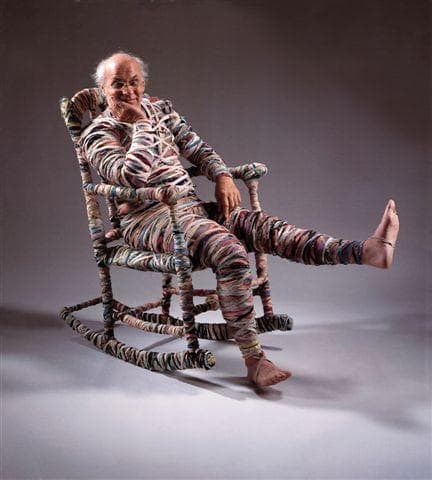
The pieces in the Fuller Craft’s new show are whimsical and functional. There's a colorful, folding chair that doubles as a piece of art you can hang on the wall. And a mummified rocking chair wrapped in strips of cloth.
Fairbanks points to western Massachusetts as a hotbed of contemporary studio furniture making and hopes his museum visitors take away a more profound understanding of the craft after experiencing the “Four Centuries of Massachusetts” collaboration.
“Imagination in the furniture arts is alive and well. It's something that we don’t know exactly where it’s going, but it’s a marvel to witness,” he said. “We only hold up the mirror — it’s the artists who make these things happen — and we’re the joyful recipients.”
Listen to the audio version of this story below:
Correction: The audio and an earlier web version of this story incorrectly stated the location of the North Bennet Street School as the South End. It's located in the North End.
This program aired on October 11, 2013. The audio for this program is not available.
